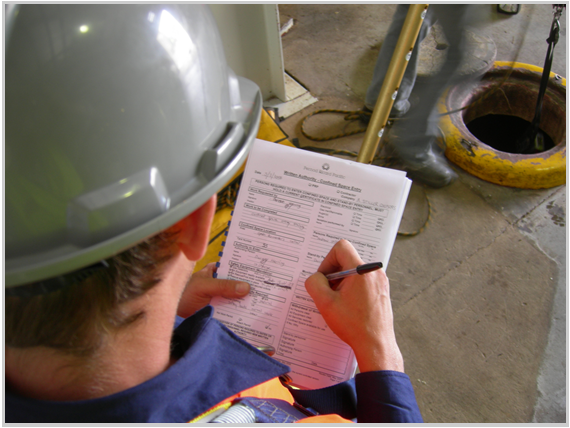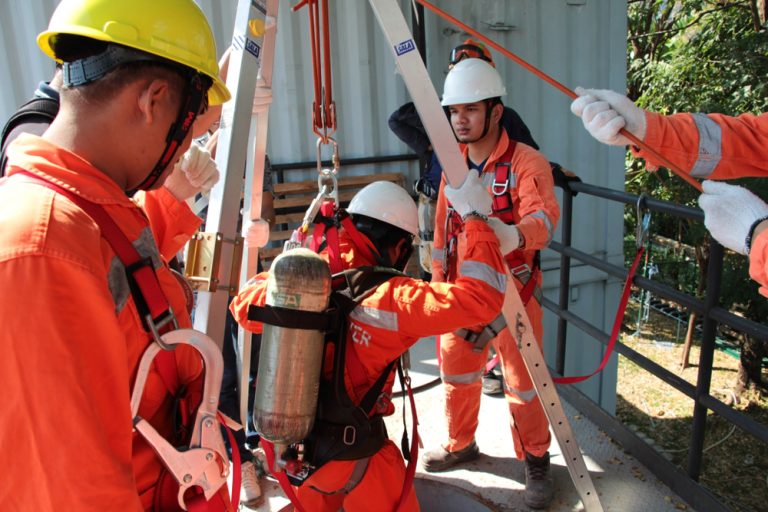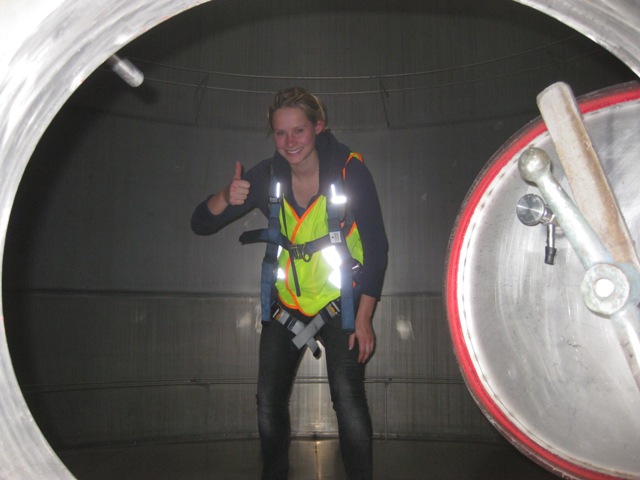Who can issue a confined space permit?
One of our valued clients recently raised a question regarding what makes a worker to be competent to issue or control
a Confined Space Entry Permit or similar permit for high risk type activity.
The model Confined Space Code of Practice highlights relvenant sections of the WHS Act & Regulation with respect to requirements and the responsibilities of persons operating a business, company officers, managers, supervisors and workers where there are confined spaces.
Section 5.4. highlights the requirement for the permit to be issued or completed by a ‘competent person’ in order for the work to proceed.
This is to ensure that “all the elements of a safe system of work are in place” and that this has been “checked and authorised”.
A competent person ”is one who has acquired through training, qualification or experience”, normally a combination of all three, “the knowledge and the skills to carry out” the task.
It follows then, that in order to be competent to assess the system of work, suitability of the equipment being used, the suitability of the personnel to complete the tasks would require the person issuing or authorising the permit to have a considerable working knowledge of confined space hazards, confined space equipment including access and gas monitoring equipment, entry & emergency response procedures.
This would typically require the person to have been trained, at regular intervals to maintain currency, according to the national competency at least every two to three years (records of training are required to be kept for two years), in confined space entry, especially if there were an incident which ended in an investigation.
So, that’s what the law has to say about it.
From a purely practical everyday perspective, consider this scenario:
- A contractor or a direct employee arrives to complete works in a confined space.
- What if the person authorising or issuing a permit has only a very basic knowledge or no knowledge at all of confined space hazards or procedures?
- How will the permit issuer know if the job has been set up correctly?
- How would they know an adequate risk assessment has been conducted?
- How would they know what emergency response would be suitable and appropriate?
Being competent to issue a form or complete some kind of tick and flick process alone is clearly not sufficient for this activity.
The permit issuer or authoriser, as indicated in the Code, normally has to complete a full cross check of any set up prior to authorising entry and would most likely be the first point of contact should an emergency response be required.
For more information about the training required dont hesitate to Contact Us




